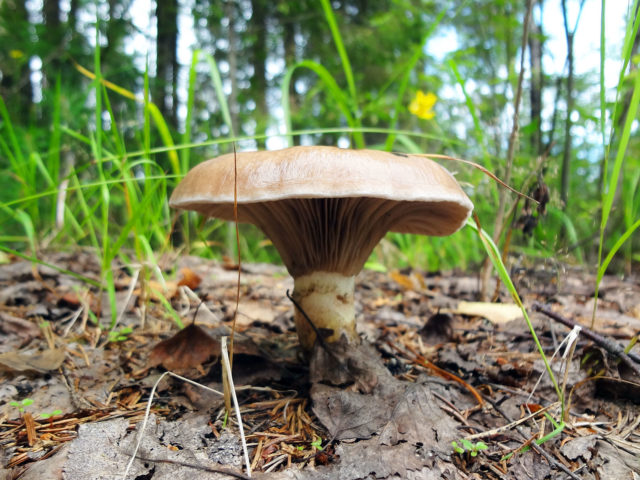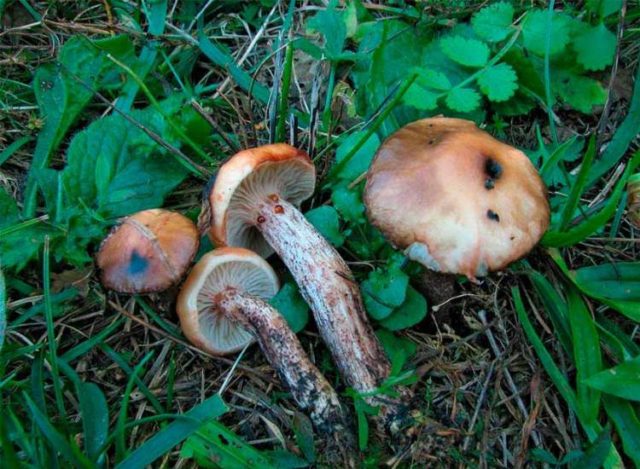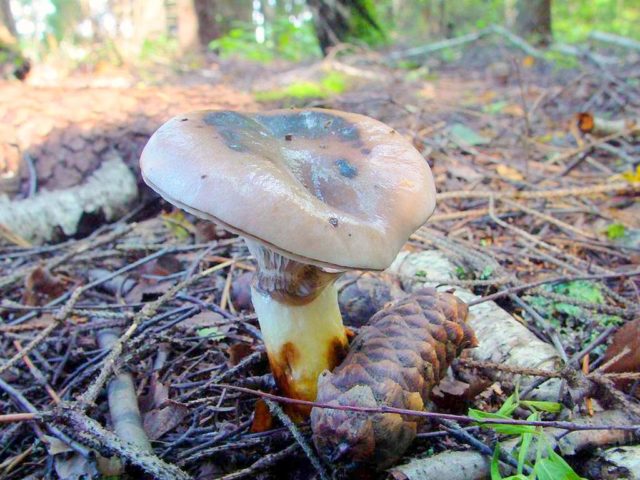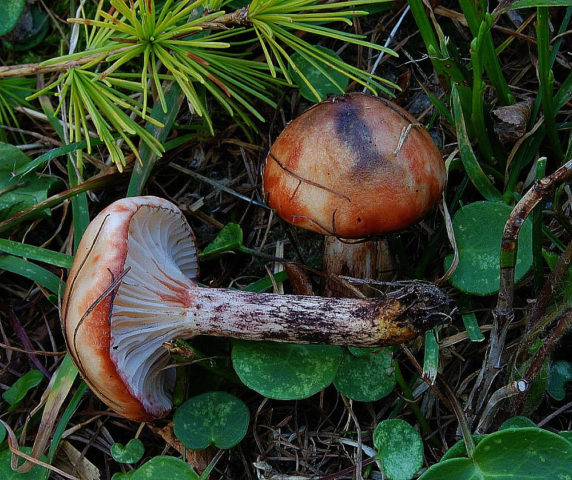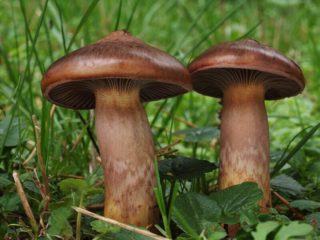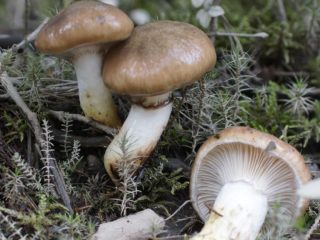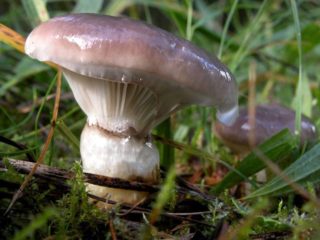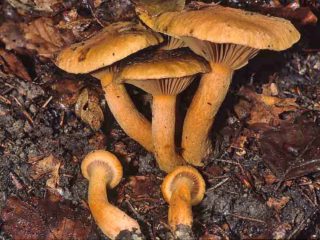Content
Motruha spotted refers to lamellar mushrooms. It is the most common variety of the genus of the same name. It is important for avid and novice mushroom pickers to know what this unusual representative of the forest kingdom looks like and what is its nutritional value.
What do spotted worms look like?
The mucus covering its surface gives an unusual look to mokruha. This feature gave the name to the entire family: fruiting bodies appear wet.
The mushroom is notable for its large cap (2.5 to 5.5 cm in diameter). The mucus layer is especially thick on its surface. At the early stage of growth, the cap of the spotted wormwood has a conical shape, but over time it becomes flat, with open, slightly depressed edges. The surface of the fungus is painted gray with characteristic dark blotches.
A leg with a diameter of up to 1.5 cm in an off-white hue, while it seems swollen, as it expands and brightens upwards. At the base, it is mustard, it can have dark gray or black spots, be curved. The mucus is not expressed, however, a massive ring forms from the cap itself. The leg reaches a height of 8 cm. It is dense in structure.
The loose light flesh of a young mushroom turns pink when broken, and turns brown in old specimens. The grayish plates of a mature mokruha turn black.
Where do spotted moss grow
The variety grows on the territory of Eurasia, North America. It can be found in small groups in rare thickets of bushes, among mosses. The fungus prefers conifers, with which it forms mycorrhiza (most of all with spruce and larch), as well as mixed forests.
Is it possible to eat spotted worms
Spotted moss is classified as conditionally edible mushroom. Before cooking, the fruit bodies are boiled for at least half an hour. This type is used in salting, pickled. Cooked mushrooms have a pleasant, buttery-like taste, fleshy pulp and good aroma.
False doubles
The spotted moss has no twins. External similarities can only be found with other members of the family.
Collection rules
Although it is difficult to confuse spotted moss with other varieties, it is necessary to check the description, and, in case of any doubt about the belonging, it is better to leave the mushroom in place. Follow the standard rules:
- It is best to go to pick mushrooms early in the morning.
- The optimal time will be after heavy rainfall, which significantly increases the level of yield.
- It is strongly discouraged to collect spotted wet carp in urban environs, near highways, railways, as well as chemical industries. In such areas, mushrooms absorb heavy metals, toxins, and exhaust gases.
- For a mushroom hike, it is best to wear boots or oversized boots, as well as things made of thick fabric.
- Rotten, overripe, wormy or flabby specimens should not be cut off. Such spotted moss will begin to decompose quickly, releasing substances that are poisonous to the body.
- For mushroom picking, it is best to use wicker baskets with good ventilation or metal buckets. Do not put the fruiting bodies in a plastic bag: in this form, they will suffocate and quickly deteriorate.
- Having found spotted moss, you should not pull it out of the soil: this way you can destroy the mycelium, which is why the yield on the site will stop for several years. It is enough to carefully cut the fruit body at the root with a knife.
Use
In addition to salting and pickling, spotted moss are good for making broths, sauces, side dishes for meat and fish dishes, and also as a unique ingredient in salads.
The use of moss spotted carries a number of useful properties, due to the presence of enzymes in the fungus, which are used in the manufacture of antibiotics.
The fruiting bodies contain a complex of amino acids, trace elements and vitamins. In terms of protein concentration in the composition of mokruha, spotted is compared with meat, which is why the product is included in the vegetarian menu.
The use of the mushroom has a beneficial effect on the quality of brain activity, the state of the immune system. The product helps to eliminate fatigue, increase the overall tone of the body, and improve the blood formula.
In the field of traditional medicine, spotted moss is also used to combat migraines, insomnia, weakness and nervous disorders.
Conclusion
Spotted bark is the most common variety. Like the rest of the genus, this mushroom has a peculiarity: a fruiting body covered with mucus. The species has no false counterparts, it is classified as conditionally edible. Cooking is possible after pre-boiling.

